
Day 30 – Support Our Volunteers
As we close this year’s 30 Days 30 Ways AUS campaign, we turn our focus to the extraordinary people who keep South Australians safe: our volunteers.
CFS Volunteer and News Presenter Brenton Ragless has a special admiration for them:
“Volunteers are on call 24/7, 365 days a year. They never know when disaster will strike, or what they’ll be facing — from road crash trauma, to house fires, to bushfires, to devastated wildlife and landscapes. They’re the salt of the earth. And they deserve our support, not just during Fire Danger Season, but all year round.”
Volunteers, including those from the CFS, SES, SurfLifesaving SA, Red Cross, and Disaster Relief Australia step up in our greatest times of need. They protect lives, homes, communities, and the environment. Their dedication is what makes South Australia stronger and more resilient.
💛 If you know a volunteer, reach out today to say thank you. A small message of gratitude means a lot.
#30Days30Ways #CFS #BrentonRagless #Volunteers #EmergencyReady
Day 29 - AED's on World Heart Day
To mark World Heart Day, we’re raising awareness about how AEDs (Automated External Defibrillators) save lives.
Each year, 30,000 Australians experience cardiac arrest outside hospitals, but only 1 in 10 survive. The quickest way to increase a casualty’s chance of survival is by using an AED immediately. Every minute counts — survival decreases by 10% for each minute without one.
What is an AED?
An AED is a portable device that analyses the heart’s rhythm and delivers a shock if required. Anyone can use it — the device gives clear voice prompts, guiding you through each step:
Turn it on
Attach the pads
Deliver a shock if prompted
Continue CPR as instructed
Josh, St John Emergency First Responder, says: “AEDs are easy to use and lifesaving. World Heart Day is a perfect reminder to know where your nearest one is and how to use it.”
Get Ready: Celebrate World Heart Day by taking a moment to locate an AED and familiarise yourself with it. Knowing how to use it could save a life.
#30Days30WaysAUS #GetReady #AED #Defibrillator #WorldHeartDay #StJohnAmbulanceSA
Day 28 – Normalise Emergencies: Make Preparedness Part of Everyday Life
Emergencies don’t need to be overwhelming. When preparedness is part of daily life, it becomes normal — not scary.
Bec, a mum of two near a national park, explains it simply:
“When it’s a cold day, you stay inside and keep warm. When it’s pouring rain, you don’t go out. And when it’s a hot day, you follow steps to stay safe.”
Her family plays emergency games, uses apps to practise calling Triple Zero, and talks about what to do if they need to leave suddenly.
But this approach isn’t just for kids — it’s for everyone. The more we make preparedness part of everyday routines, the more resilient and calm we’ll all be when real emergencies happen.
👉 In South Australia, emergencies are a reality of life. Normalise preparedness today, so you’re ready tomorrow.
#30Days30Ways #Preparedness #Resilience #FamilySafety #GetReady
Day 27 – 3 Words Can Find You Anywhere
When every second counts, knowing exactly where you are can make all the difference. Russell, Emergency Response Coordinator with SAPOL, explains how the what3words app helps.
The app divides the world into 3x3 metre squares, giving each one a unique three-word address.
💡 Real-life example: A driver stranded on Yorke Peninsula shared their 3 words. Emergency services located them immediately, turning a potentially long search and rescue into a quick and precise rescue.
🏟️ Big events like the AFL Grand Final, concerts, or the Christmas Pageant often involve huge crowds. Street addresses and landmarks aren’t enough — 3 words pinpoint your exact location.
🌍 Multilingual: send your 3 words in English, and a friend with their phone set to another language will see them translated automatically.
📲 Download what3words today and make sure you, your loved ones, and anyone around you are findable, anywhere, anytime.
#what3words #30Days30Ways #SAPOL #EmergencyPreparedness
Day 26 – Travel Smart in Fire Season
Every summer, thousands of South Australians head off for holidays. But research shows only half of travellers check the fire danger rating of their destination.
Bushfires don’t stop for holidays — so before you pack the car, make sure you’re prepared:
🔥 Check the fire danger rating for where you’re going
📻 Take a portable battery-powered radio for updates. Don’t rely on your phone.
🧥 Pack protective clothing, water, and a woollen blanket in case you encounter fire conditions
Prepared travellers are safer travellers.
👉Get Ready: Travel smart and plan ahead.
Learn more here: CFS Travelling in South Australia
#30Days30WaysAUS #GetReady #TravelSmart #CFS
Day 25 – Anticipate and Communicate: Brenton’s Story
When extreme weather strikes, CFS volunteer and TV presenter Brenton Ragless prepares not only for his role on the front lines - but also for his role as a dad.
Brenton’s earliest memory of bushfire goes back to Ash Wednesday, 1983. At just six years old, he remembers the sirens wailing, the orange sky above the Mount Lofty Ranges, and the worried tone in his mother’s voice as his father was deployed.
Although there was no way of knowing where his father was, Brenton remembers feeling trust - his father was calm, organised, and always prepared.
That lasting impression has shaped how Brenton now prepares his own family. On days of extreme weather, he looks ahead at the forecast and thinks about how conditions could affect his family. Even though his children are young, he takes time - over breakfast or in the car - to explain:
why today is a dangerous day
what the weather may bring
where he will be and what he is doing
By anticipating and communicating, Brenton makes sure everyone is on the same page. When disaster strikes, that shared understanding gives him peace of mind - knowing his family is ready.
⚠️ Brenton’s advice is simple: Preparedness starts with a conversation.
👉 Get Ready: Talk with your family today about what you’d do in extreme weather.
#30Days30WaysAUS #GetReady #CFS #BePrepared #BrentonRagless
Day 24 – Rip Currents: Know the Signs
What moves fast, hides in plain sight, and is one of the deadliest natural hazards on Australian beaches?
👉 A rip current.
Rip currents are powerful channels of water flowing away from shore. They cause over one third of all coastal drownings in Australia — and they’re often hard to spot.
Bernie from Surf Life Saving SA explains what to look for -
Signs of a rip current:
Deeper, darker water
Fewer or no breaking waves
Sandy water stretching out to sea
Foam, debris, or seaweed moving away from shore
A calm-looking patch with strong movement beneath
If you’re caught in a rip:
Stay calm — don’t panic
Raise your hand and call for help
Float with the current; it may take you to safety
Swim parallel to the beach or towards breaking waves
It’s not about strength — it’s about knowing what to do.
👉 Get Ready: Scan before you swim.
Learn more with Surf Life Saving SA.
#30Days30WaysAUS #GetReady #BeachSafety #RipCurrent #SurfLifeSavingSA
Day 23 – International Sign Language Day: Learn Auslan for Emergencies
When emergencies strike, communication can save lives.
That’s why, for International Sign Language Day, Ben is teaching us some simple Auslan signs that anyone can learn:
🚨 Emergency / Urgent
🆘 Help me / Help you
🏃 Evacuate
👮 Police 👩🚒 Firefighter 🚑 Ambulance
These basic signs can bridge communication barriers and ensure no one is left behind in an emergency.
👉 Get Ready: take a few minutes today to learn Auslan signs — then practice with your family or friends so everyone knows what to do in a crisis.
#30Days30WaysAUS #GetReady #Auslan #Inclusion #BePrepared
Day 22 – Bushfire Plan: Juliet’s Story
Juliet, her husband, and their three young daughters lived in the Adelaide Hills when bushfire struck just five days before Christmas in 2019.
At 9am, the power went out. A text from the CFS arrived: bushfire was in the area - act now and leave.
Juliet’s family did the right thing and left quickly, but without a plan they had no clear idea of what to take. In the panic, they left behind precious things including their 5-year-old’s comfort toy and Juliet’s wallet.
The next day, their neighbour told them the devastating news: their home was gone.
Now, Juliet’s family always has a bushfire plan. They keep a box of special items ready to take, and a clear plan for what to do if they need to leave again.
⚠️ Juliet’s story is a reminder: bushfires can happen suddenly, and stress can make it hard to think clearly. Having a written plan makes all the difference.
👉 Get Ready: Make your bushfire plan today.
Learn how - 5 Minute Bushfire Plan - CFS
#30Days30WaysAUS #GetReady #BushfirePlan #CFS #BePrepared
Day 21 - Deaf Awareness in Emergencies
For Deaf people like Ben, emergencies can be especially concerning when communication breaks down. Imagine a fire, flood, or power outage - and the people around you can’t tell you what’s happening.
Ben shares what he wants everyone to know:
👉 If it’s urgent, a simple gesture or tap on the shoulder can help direct someone to safety
❌ Not all Deaf people can lip-read. Lip patterns are often hard to follow, especially with beards or masks
❌ Writing notes isn’t always possible - and not all Deaf people use English fluently, because English and Auslan are very different languages
✅ His message is clear: be Deaf aware. There’s no one-size-fits-all way to communicate, so stay calm, be patient, and use whatever methods you can to make sure everyone stays safe.
Emergencies impact everyone differently. Get Ready - and be aware of others around you.
#30Days30WaysAUS #GetReady #Inclusion #DeafAwareness #Auslan
Day 20 – Floods: Paul’s Story from the Murray
Paul and his family bought a shack on the Murray River and spent 11 years — and all their savings — doing it up. They finally finished in September. Two months later, in November, the floods came.
“It took weeks and months for the water to rise, but when it peaked, it was 5.5 metres above the normal level. So many shacks along the river were destroyed. People don’t think it will happen to them — but it does.”
Paul’s advice for flood preparedness:
✅ Have a plan: Decide early when to remove belongings. Don’t wait until the water is already rising.
✅ Check your insurance: Many policies don’t include flood coverage — know exactly what you’re protected against.
✅ Be realistic: Floods can and do happen. Preparing ahead can protect your home, your possessions, and your family.
👉 Get Ready: Flood preparedness saves more than property — it saves lives.
#30Days30WaysAUS #GetReady #FloodPrep #MurrayRiver
Day 19 – Stop a Bleed: Quick steps with Sam from St John
Sam, a St John First Aid Trainer, shows us the simple steps to stop a bleed:
1️⃣ Apply Firm Pressure
Press directly on the wound until the bleeding slows. Use something sterile if you have it — towel, cloth, or even your shirt works.
2️⃣ Don’t Remove, Add On
If blood soaks through, place another dressing on top. Never remove the first one — keeping it in place helps clotting.
3️⃣ Call 000 if Needed
If bleeding is heavy or won’t stop despite pressure, call 000 immediately.
💛 Remember: Staying calm and acting quickly could save a life. Learning how to stop a bleed is a simple first aid skill that everyone should know.
Learn more from St John’s first aid fact sheets: https://www.stjohnsa.com.au/resources/first-aid-facts
Or do a first aid course: https://www.stjohnsa.com.au/shop-our-courses
#30Days30WaysAUS #GetReady #StopaBleed #FirstAid #StJohnAmbulanceSA
Day 18 - Trees on power lines and the 10 metre rule
When storms sweep through South Australia, one of the biggest dangers is trees and branches coming down onto powerlines.
Josh from SA Power Networks has seen firsthand how risky this can be - and wants to clear up a dangerous misconception.
“Many people think fallen powerlines are dead. In fact, they are often still live —-and can cause serious injury or electrocution.”
⚡ Josh’s top safety tips:
• Always stay at least 10 metres back from fallen powerlines.
• Report the hazard immediately to SA Power Networks.
• Be proactive: on your own property, check for trees or branches close to powerlines and have them trimmed before storm season.
These simple steps can reduce risks, protect your household, and keep our community safe when wild weather hits.
👉 Get Ready: Stay back, stay safe, and prepare before the next storm.
#30Days30WaysAUS #GetReady #StormSafety #SAPowerNetworks
Day 17 - Stop, Look, Stay Alive. A guide to the beach.
On Australian Citizenship Day, we celebrate what we love about living here - and for many Australians, old and new, the beach is at the heart of our lifestyle. But while the coast is beautiful, it can also be dangerous.
That’s why Lillian from Surf Life Saving SA reminds us to:
🔴 STOP – Before you enter the water, pause and think.
👀 LOOK – Check surf conditions and weather forecasts, look for any signs and warnings, and spot rips and other dangers. If you see the red and yellow flags, swim between them.
❤️ STAY ALIVE – Be realistic about your ability. Are you a strong swimmer? Are you swimming alone, or with friends?
By taking these simple steps, you’ll reduce risks and enjoy the water safely.
👉 Get Ready: Stop. Look. Stay Alive.
Learn more beach safety tips - https://beachsafe.org.au/
#30Days30WaysAUS #GetReady #BeachSafety #SurfLifeSavingSA
Day 16 - One Blanket, Big Protection: Kitchen Fire Safety.
Firefighter Declan Dwyer has spent 35 years protecting South Australians. One of the most common incidents he responds to is kitchen fires.
Most begin while cooking - oils and fats that overheat or catch alight. Even when a blaze is contained to just one or two rooms, the damage bill can be extensive.
Declan’s advice is clear:
❌ Never use water on a cooking oil or fat fire - it causes an explosion and spreads burning oil.
🔥 Keep a fire blanket in your kitchen. They’re simple to use, safe to practise with, and cost as little as $15 from supermarkets or hardware stores.
✅ Always check the fire blanket meets Australian Standards.
“A fire blanket could stop a small fire before it becomes a disaster.” - Declan Dwyer
👉 Learn more about fire safety and kitchen preparedness at https://www.mfs.sa.gov.au/community-safety/safety-and-education/fact-sheets/fire-blankets
#30Days30WaysAUS #GetReady #KitchenFire #FireBlanket #SAMFS
Day 15 - When the Lights Go Out: Annette's story
Emergencies look different for everyone. For Annette, who is visually impaired, the scariest emergency is a power outage.
“When the lights go out, I can’t just step outside — there could be powerlines down. And without vision, I have no way of knowing whether it’s just my fuse box or a bigger problem.”
Annette has built strategies to help her stay safe:
👥 She relies on trusted neighbours who check in and keep her updated.
📞 She keeps SA Power Networks’ phone number in an accessible place.
📻 She always has a battery-powered radio with spare batteries, tuned to ABC Emergency — her vital link to the outside world.
⚡ Annette’s story is a reminder that emergencies impact people in different ways, and accessibility needs must be part of every preparedness plan.
👉 Get Ready: Think about your neighbours, family, or friends who may need extra support during a power outage.
Learn more about preparing for outages at SA Power Networks –
What to do when the power goes out - SA Power Networks.
#30Days30WaysAUS #GetReady #PowerOutage #Accessibility #SAPowerNetworks
Day 14 - Mental Health in Emergencies: Don’t Forget Your Mind
When we prepare for emergencies, we often focus on the practical side:
• Bags packed
• Pets sorted
• Cash on hand
• Documents ready
But there’s one area that’s just as important — your mental health.
In stressful situations, our bodies trigger a fight, flight, or freeze response. When stress levels rise too high, our ability to think and act clearly can shut down. That’s why planning ahead for your mental health is just as important as planning escape routes, or stocking food or water.
Andrew’s advice:
Be selective with news. Only follow updates that affect your situation.
Surround yourself with calm people. Stress is contagious, but so is calmness.
Have your own de-stress tools. Know what helps you come back to balance.
👉 His number one tip? Breathe.
Deep, slow breathing sends a signal to the brain that you are safe. This calms your nervous system, lowers stress, and helps you think clearly.
When your mind is calm, you’re more capable of supporting your family, friends, and community during an emergency.
Get Ready: Build a mental health plan today.
#30Days30WaysAUS #GetReady #MentalHealth #EmergencyPreparedness
Day 13 - Treat a Burn Properly
Day 13: Treat a Burn the Right Way
🌍 Today is World First Aid Day — a day to celebrate the skills that save lives. First aid isn’t just for responders and paramedics. It’s for all of us.
To mark the day, we’re sharing one simple but powerful message from St John First Aid Trainer and Event Responder Leanne:
💧 Cool the burn under running water for 20 minutes.
It may feel like forever, but it’s the most effective way to:
• Ease pain
• Reduce blistering
• Lower the risk of infection
🚫 Don’t use ice, vegetables or fruit (like cucumber or tomato), aloe vera, or cotton wool — they can make the injury worse.
✅ Do cover the burn with clean cling film or a sterile, non-stick dressing.
⚠️ Always seek urgent medical help for burns to the face, airway, hands, feet, or genitals, or if the burn is large or deep.
👉 This World First Aid Day, celebrate by learning the skills that make the biggest difference. Being ready means knowing what to do before an emergency happens.
Find out more at: https://www.stjohnsa.com.au/resources/first-aid-facts
#30Days30WaysAUS #GetReady #FirstAid #Burns #StJohnAmbulanceSA #worldfirstaidday.
Day 12 - Heatwaves: Australia’s Deadliest Natural Hazard
When Asela first moved to Australia, he thought a cricket match in the heat would be just another game. Instead, he ended up in hospital with heatstroke.
During the match, his whole body cramped, and he couldn’t move. Although he was discharged from hospital the next day, the effects were serious — he suffered kidney damage, and it took two years for his bloods to return to normal.
Heatstroke can come on quickly and the consequences can be severe.
Symptoms include:
Hot, dry skin
Rapid breathing or fast pulse
Confusion, dizziness, slurred speech
Vomiting, collapse, or seizures
If you or someone around you shows these signs, call Triple Zero (000) immediately.
👉 Get Ready: Stay safe in the heat.
Plan your activities to avoid the hottest part of the day
Stay hydrated
Look out for vulnerable community members
Learn more about how to prepare for extreme heat.
#30Days30WaysAUS #Getready #Heatwave #SES #SAHealth
Day 11 - Mental Health First Aid with Josh, Event Responder
This R U OK? Day, we’re reminded that checking in with each other can save lives. St John Event Responder Josh knows this firsthand - he’s seeing more mental health emergencies presentations at events and in the community than ever before.
With 1 in 5 Australians experiencing a mental health issue each year, the chances are high that someone you know — a friend, family member, neighbour, or colleague — will be affected. But mental health challenges aren’t always easy to recognise.
That’s where Mental Health First Aid training comes in. St John’s courses give you the tools to:
Identify early signs and symptoms of mental ill-health
Approach and support someone in need
Respond confidently and safely in a crisis
Encourage people to seek further professional help
By learning these skills, you’re not just preparing yourself — you’re strengthening your community.
💛 Get ready: Do a Mental Health First Aid course with St John.
Find out more:
https://www.stjohnsa.com.au/shop-our-courses
#30Days30WaysAUS #GetReady #RUOKDay #MentalHealthFirstAid #Stjohnambulance_sa
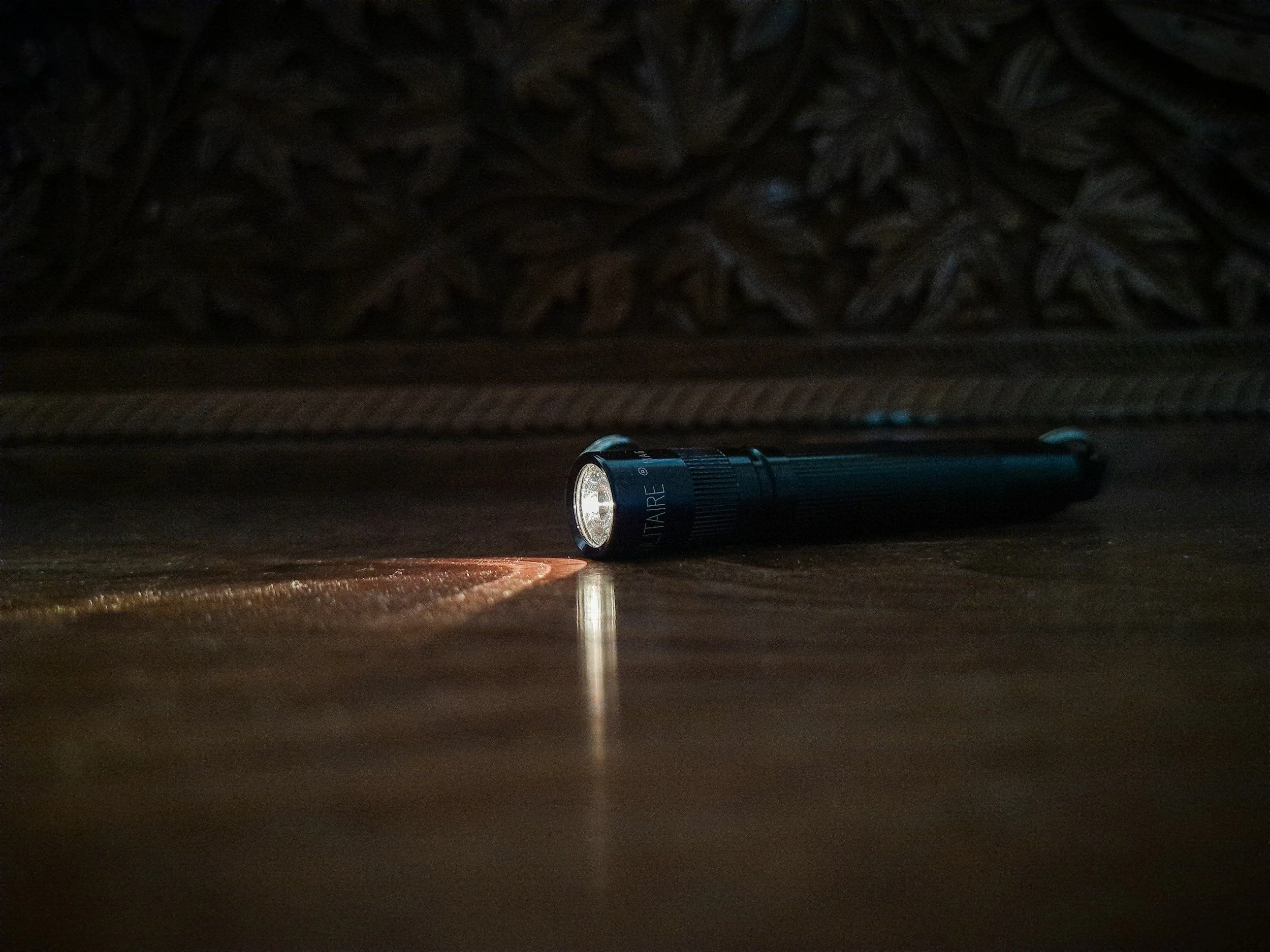
Day 10 - Preparing for Power Outage
Occasional power outages are a part of life in South Australia. They can be frustrating, but with some simple preparation, you can stay safe, connected, and comfortable until the lights come back on.
Cecilia’s top tips:
Stay connected: Keep a portable back-up battery to charge your phone.
Essential supplies: Stock up on spare batteries for your torch and portable radio.
Plan ahead: Visit the SA Power Networks website for outage information, tips, and tools to build your household power plan.
Look out for others: Power outages can have serious impacts on regional communities and those who rely on life support equipment. Make sure you have a plan in place and check in on vulnerable family, friends, and neighbours.
While power outages are disruptive, planning ahead means you can stay safe and help others who may need extra support
👉 Take five minutes today and prepare your power outage plan -
sapowernetworks.co/When-the-power-goes-out
#30Days30WaysAUS #GetReady #PowerOutages #Sa_powernetworks
Day 9 - Home Fire Escape Plan
When fire strikes, seconds matter. Declan Dwyer has seen it firsthand in more than three decades of firefighting. His message is clear: a well-practiced home fire escape plan saves lives.
Declan’s key advice:
Inside access: Make sure all doors and windows can be opened from the inside. If they need keys, keep them close by.
Smoke alarms: Know how they sound and what to do when they go off — every family member should be prepared.
Meeting point: Agree on a safe outdoor location, like the letterbox, so everyone knows where to gather.
Escape routes: Identify at least two exits from each room. Walk through them as a family — can everyone get out using those routes, including kids or older relatives?
Practice often: Drill your plan so that, under stress, everyone knows exactly what to do.
Extra tips from @MFS_SA:
Install interconnected photoelectric smoke alarms in sleeping and living areas.
Test alarms monthly, clean every six months, replace batteries every 12 months, or if a low battery sound emits.
Keep escape paths clear of obstacles.
In practice runs: crawl low under smoke, close doors behind you, head straight to your meeting point, call 000, and never re-enter the building.
Being fire-ready isn’t about fear — it’s about giving your family the best chance to get out safely.
👉 Take time this week to sit down with your family and map out your escape routes. Then practice them together.
For more info, check out - https://www.mfs.sa.gov.au/community-safety/safety-and-education/fact-sheets/home-fire-escape-plan
#30Days30WaysAUS #HomeFireEscapePlan #GetReady #SAMFS
Day 8 - Lifejackets: Small cost. Big Lifesaver
The ocean can change in seconds — calm one moment, dangerous the next. That’s something Richard, a Surf Life Saving volunteer of 24 years, knows better than most.
Earlier this year, he rescued five people when their boat overturned off a South Australian beach. None of them could swim. None were wearing lifejackets.
Richard has seen it too many times: people underestimate the sea, and overestimate their ability to survive. His message is simple — lifejackets save lives.
Lifejackets do more than just float:
They bring you to the surface and keep you afloat.
They let you rest on your back and conserve energy.
They help retain warmth if you curl into a ball.
They make you visible in the water — even from shore.
For around $45, a lifejacket is one of the cheapest pieces of lifesaving equipment you’ll ever buy. Richard puts it bluntly: “It’s the cost of a life.”
Take Action Today:
• Always wear a lifejacket when out on the water.
• Make sure your family and friends wear one too.
• Keep them well-fitted, maintained, and ready to use.
Being prepared on the water means respecting its power — and protecting yourself with a lifejacket every single time.
Follow the 30 Days 30 Ways Australia campaign throughout September for more simple actions to keep you and your community safe.
#30Days30Ways #GetReady #LifejacketsSaveLives #SurfLifeSA
Day 7 – Helen’s Story: Why Her Son Downloaded Alert SA
At 81, Helen describes herself as “not very au fait with technology.” Like many older South Australians, she didn’t grow up with smartphones or apps. But when her son downloaded the Alert SA app onto her phone, Helen was pleasantly surprised.
She says it’s easy to use — even for someone who doesn’t consider herself tech-savvy.
Her favourite features?
• 🗺️ The live map: Helen can see straight away if anything is happening near her.
• ℹ️ Emergency information: Clear, reliable updates that help her know what to do.
For Helen, Alert SA isn’t just an app — it’s reassurance. It helps her feel informed and connected during emergencies, giving her peace of mind that she’ll have the latest warnings at her fingertips.
Helen’s story is also a reminder: you don’t have to wait for someone to ask. If you’ve got parents, grandparents, neighbours, or friends who aren’t confident with technology, set it up for them. A few minutes could make a huge difference in an emergency.
📲 Download the Alert SA app today and help someone you care about get connected.
#30Days30WaysAUS #AlertSA #EmergencyPreparedness #StaySafeSA
Day 6 – Storm Preparedness with Dave O’shannessy, SES
Last Friday, severe storms — including reports of tornadoes — swept across South Australia. In just 24 hours, the State Emergency Service (SES) received more than 600 requests for assistance. From damaged roofs and blocked drains to fallen trees, the message is clear: we need to prepare for severe weather before it hits.
SES’s Dave O’shannessy says the simplest steps can make a huge difference:
Clear gutters and drains. Blockages cause water to back up, flooding homes and damaging property.
Maintain trees and branches. Overhanging limbs can fall in strong winds, posing risks to homes, cars, and people.
Know your emergency plan. Ask yourself: If I couldn’t live in my property, where would I go?
Plan for pets. Ensure you know how to safely relocate your animals if you need to leave home.
Secure important documents. Keep them somewhere safe, accessible, and ready to grab in an emergency.
Technology can also help. Dave strongly recommends downloading the Alert SA app, which delivers official warnings and live updates during severe weather.
Storms are part of life in South Australia, but with some preparation, we can reduce their impact and keep our families safe.
👉 Take action today — clear those gutters, check those trees, and update your emergency plan.
For storm preparation tips, visit ses.sa.gov.au/storm
For emergency SES storm assistance, call 132 500
#30Days30WaysAUS #SES #StormPreparedness #SAtornado
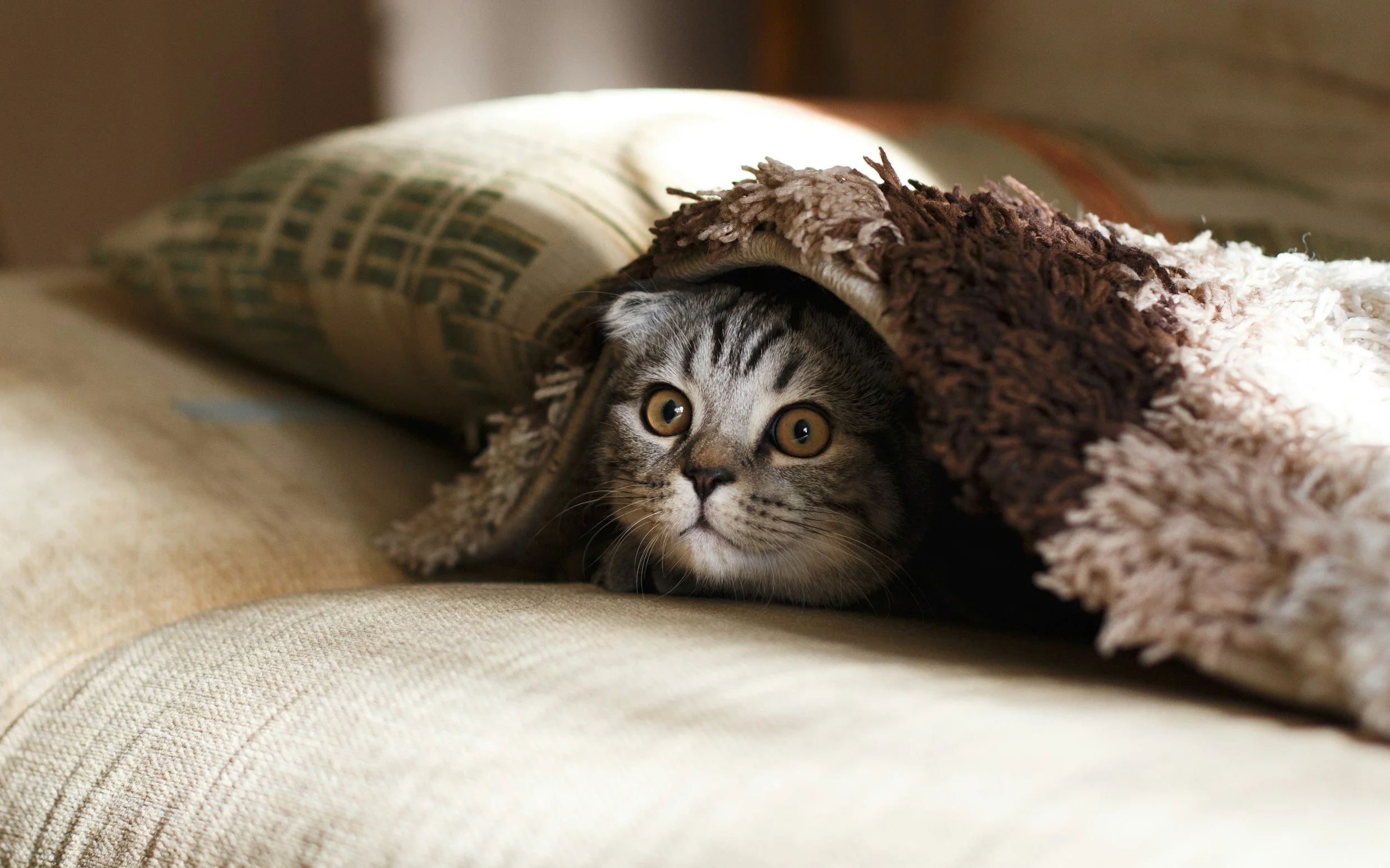
Day 5 - Pets in Emergencies: Don’t Forget Your Fur-baby Family
When emergencies strike - whether it’s bushfire, storm, or flood - your pets rely on you to keep them safe. Including animals in your emergency plan isn’t optional.
It’s a responsibility.
Today’s video highlights just how important it is to think ahead for your pets, with help from some adorable SA pets who know how to sit, stay, and evacuate (okay, maybe not evacuate - but they’re ready to go when you are!).
Simple steps to prepare your pets:
Add pet supplies to your emergency kit (carrier, food, water, meds, comfort toy)
Make sure your pets are microchipped and their details are current
Have a plan for where your animals will go if you need to leave
Practice early evacuation, leaving late puts lives at risk
Your pets are part of the family. Make sure they’re part of your survival plan too.
Watch the video and use this CFS checklist to make your bushfire plan today.
https://cfs.sa.gov.au/plan-prepare/before-a-fire-be-prepared/make-a-plan/
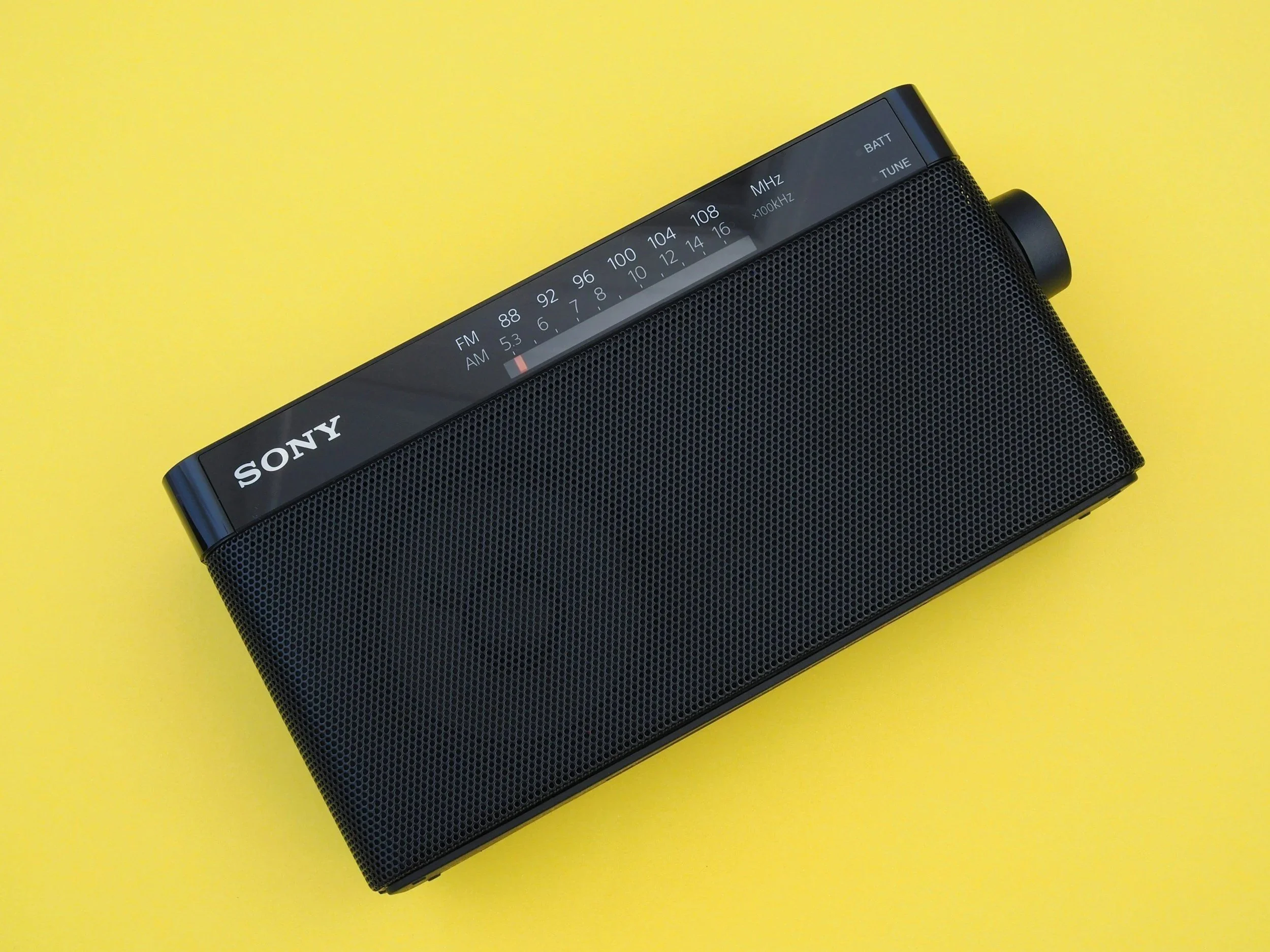
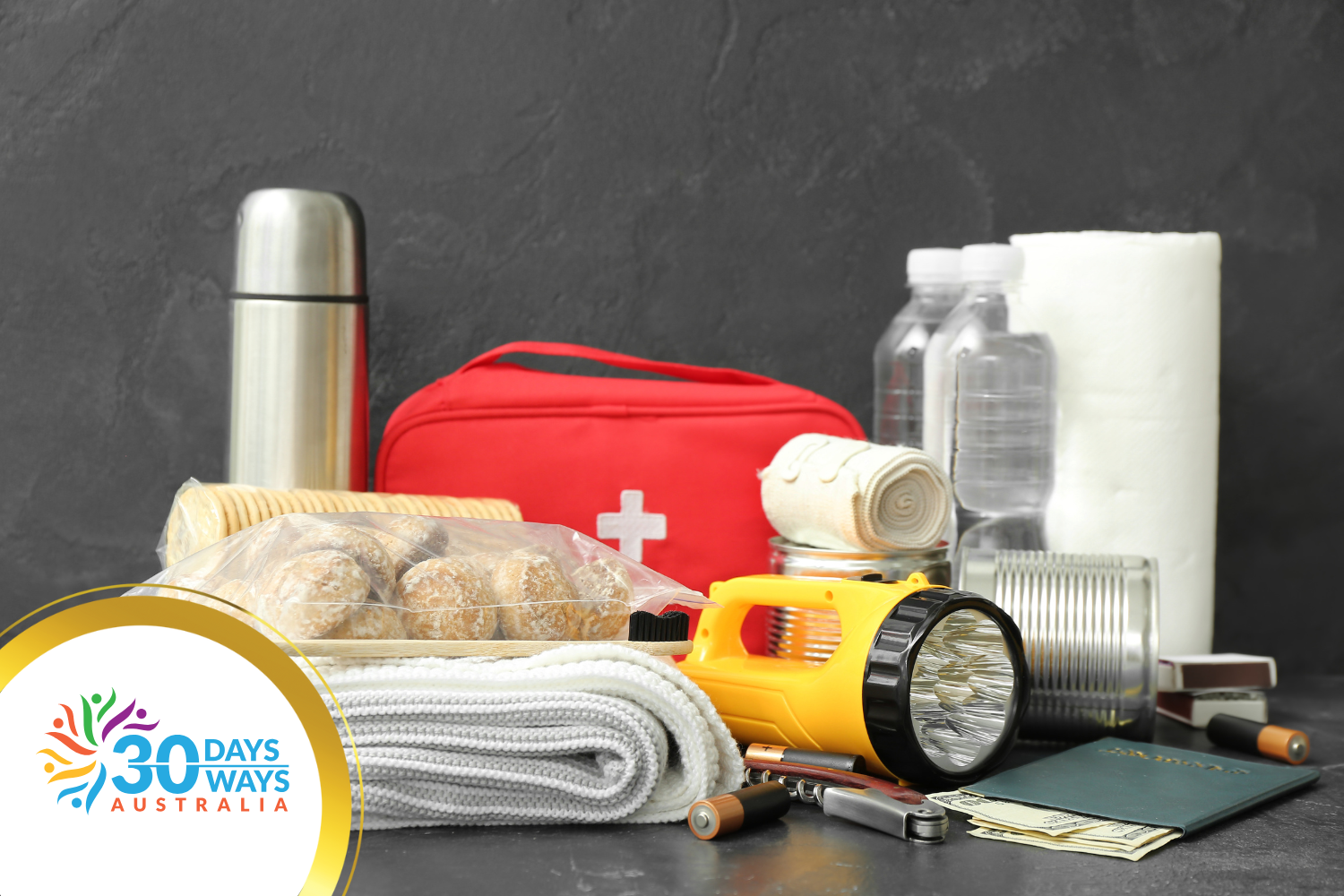
Day 3 - Emergency Kits
Preparedness with Disability: Annette’s Advice
Emergencies can happen fast. Annette knows this from experience - she was caught out during the 2003 Canberra bushfires. Living with vision impairment hasn’t stopped her from being ready. In fact, it’s given her an even stronger focus on preparation.
Annette keeps her emergency kit packed and makes sure it includes the essentials for both herself and her guide dogs, Maple and Molly.
Her advice is clear – “living with disability doesn’t mean you can’t be prepared”, says Annette. “With a little planning, everyone can take steps that suit their own needs and circumstances”, she told us.
Tips for people living with disability
Plan ahead: Think about what specific items you need in your emergency kit (medications, mobility aids, communication devices, or sensory supports).
Include your animals: Pets and assistance animals will need their own supplies such as food, water, and bedding.
Stay connected: Talk with your support networks, friends, or neighbours about how they can help in an emergency.
Practice your plan: Rehearse how you’ll leave quickly and safely, so you feel confident if an emergency happens.
Preparedness is possible — and empowering.
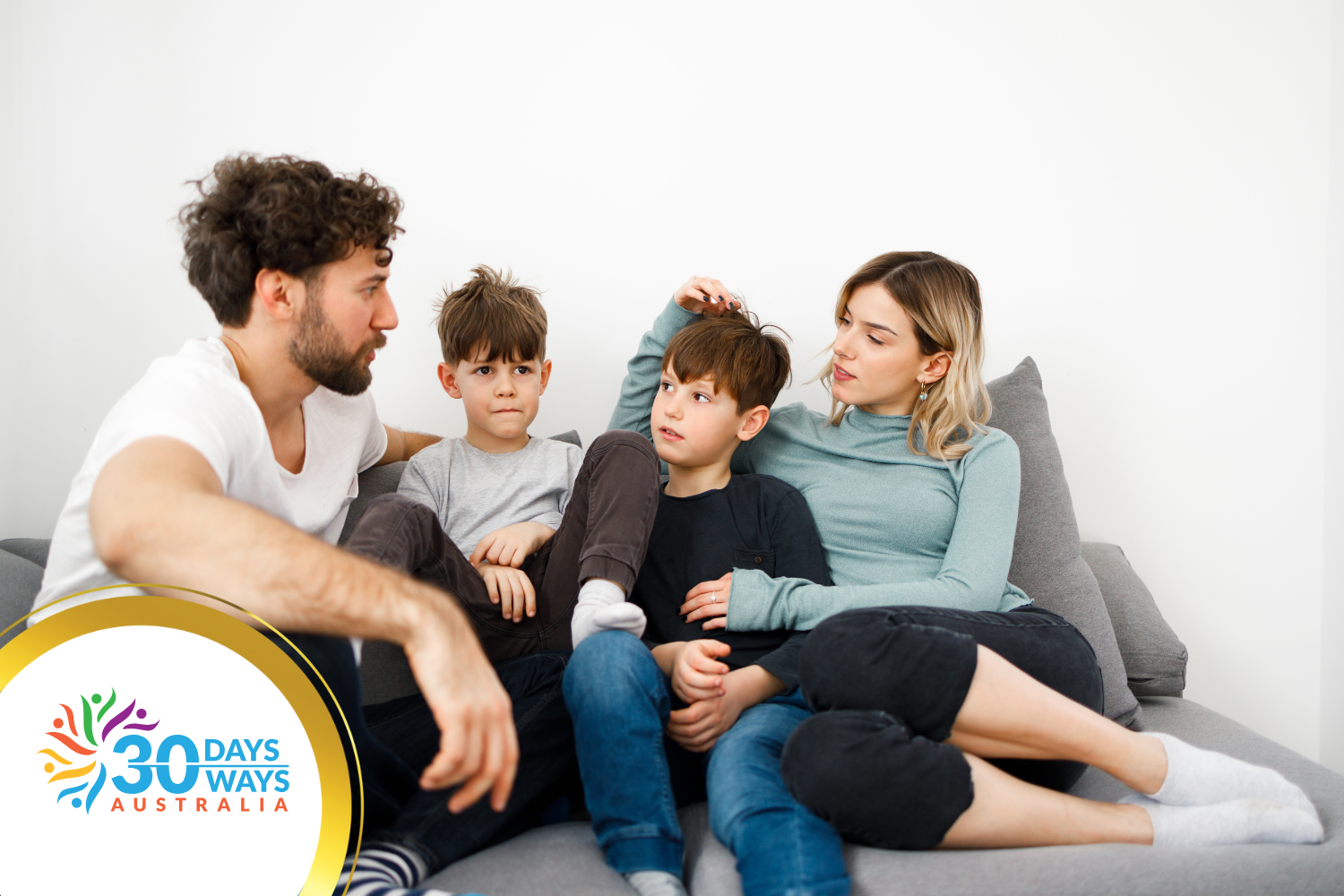
Day 2 - Talk to Kids about Emergencies
Today, we’re joined by South Australia’s Police Commissioner, Grant Stevens, who shares his advice for parents and carers.
Emergencies can be confusing and frightening for children. Having calm, clear conversations before something happens helps kids feel safer and more confident if an emergency does occur.
👨👩👧 Tips from the Commissioner:
Talk to your kids in simple, age-appropriate language.
Reassure them that emergency services are here to help.
Practice what to do as a family – whether it’s calling Triple Zero (000), knowing where to meet, or what to pack.
Encourage questions so they feel included and prepared.
Prepared kids are resilient kids. By starting the conversation early, you’re giving your family the tools to stay safe and calm in an emergency.
👉 Watch the video below and share it with family and friends.
👉 Follow along every day this September on Facebook, Instagram, and our website for more tips.
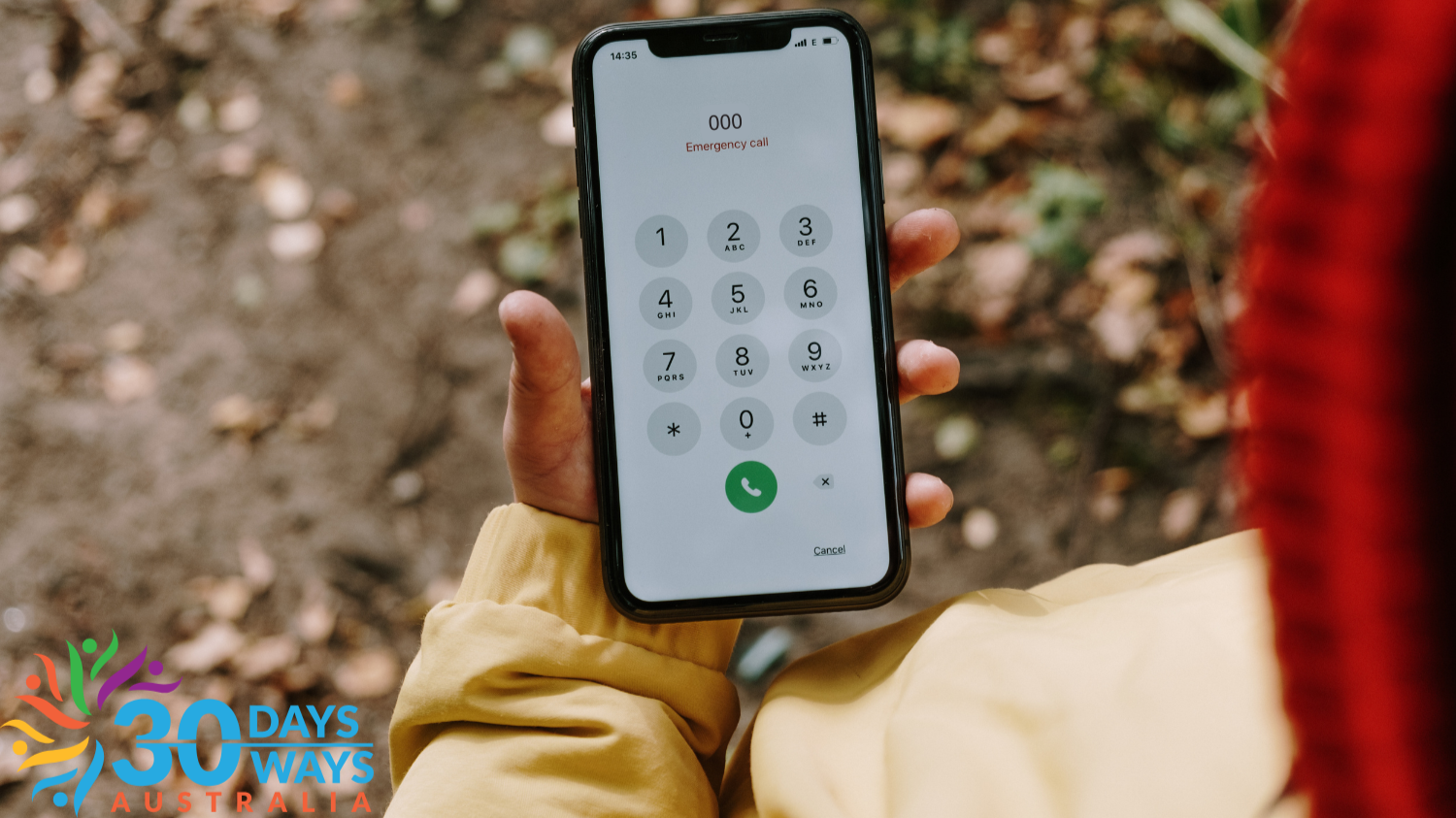
Day 1 - Emergency Numbers
Emergencies don’t give you time to think; they just happen. That’s why one of the simplest and most powerful things you can do for your household is make sure everyone knows the right numbers to call, and when to call them. Here in South Australia, 000 is the number you call in a life-threatening emergency. Whether it’s fire, police, or ambulance, 000 (triple zero) gets you straight to help when every second matters. But knowing when to call is just as important as knowing the number.
Teach your kids early
Children are often the ones at home when something goes wrong. Taking the time to sit with them and explain what “an emergency” really means (fire, someone badly hurt, break-in), that they should always stay calm, call 000, and listen to the operator, and how to give your home address or describe where they are, is a simple step that can save lives. A great tip is to role-play a pretend emergency. Kids remember far better when they’ve practiced.
Keep key numbers handy
Not every situation is a 000 call. Having a simple, visible list of numbers on your fridge or noticeboard can save a lot of stress:
132 500 – State Emergency Service (SES): for storm or flood damage, trees down, or urgent help during severe weather.
131 444 – Police Assistance Line: for police attendance in non-life-threatening situations like minor crashes, property damage, or noise complaints.
13 13 66 – SA Power Networks: for electricity faults and outages.
1300 729 283 – SA Water: for water supply issues.
13 11 26 – Poisons Information: if someone swallows something they shouldn’t.
If you’ve got older family members or teenagers with their own mobiles, encourage them to save these numbers into their phones too.
Make it part of your family routine
Think of it like fire drills. A five-minute chat once or twice a year about emergency numbers can make a world of difference. Stick a copy of your list on the fridge, in the caravan, or somewhere that’s easily accessible to your kids. Emergencies are stressful, but when everyone knows who to call and when, it takes away some of the panic and gives you back a little control.
About the 30Days30WaysAUS campaign
The 30Days30WaysAUS campaign is all about helping every South Australian get prepared, stay ready, and build resilience against emergencies. Each day in September we’ll be sharing simple, practical actions that make a big difference when it matters most. From bushfires to blackouts, floods to heatwaves, the goal is to make preparedness easy and part of everyday life.
Follow along with us on our website, Facebook, or Instagram @30Days30WaysAUS for daily hints, tips, messages, and practical activities to help you and your family get ready. Together, we can build a stronger, safer, more resilient South Australia.
